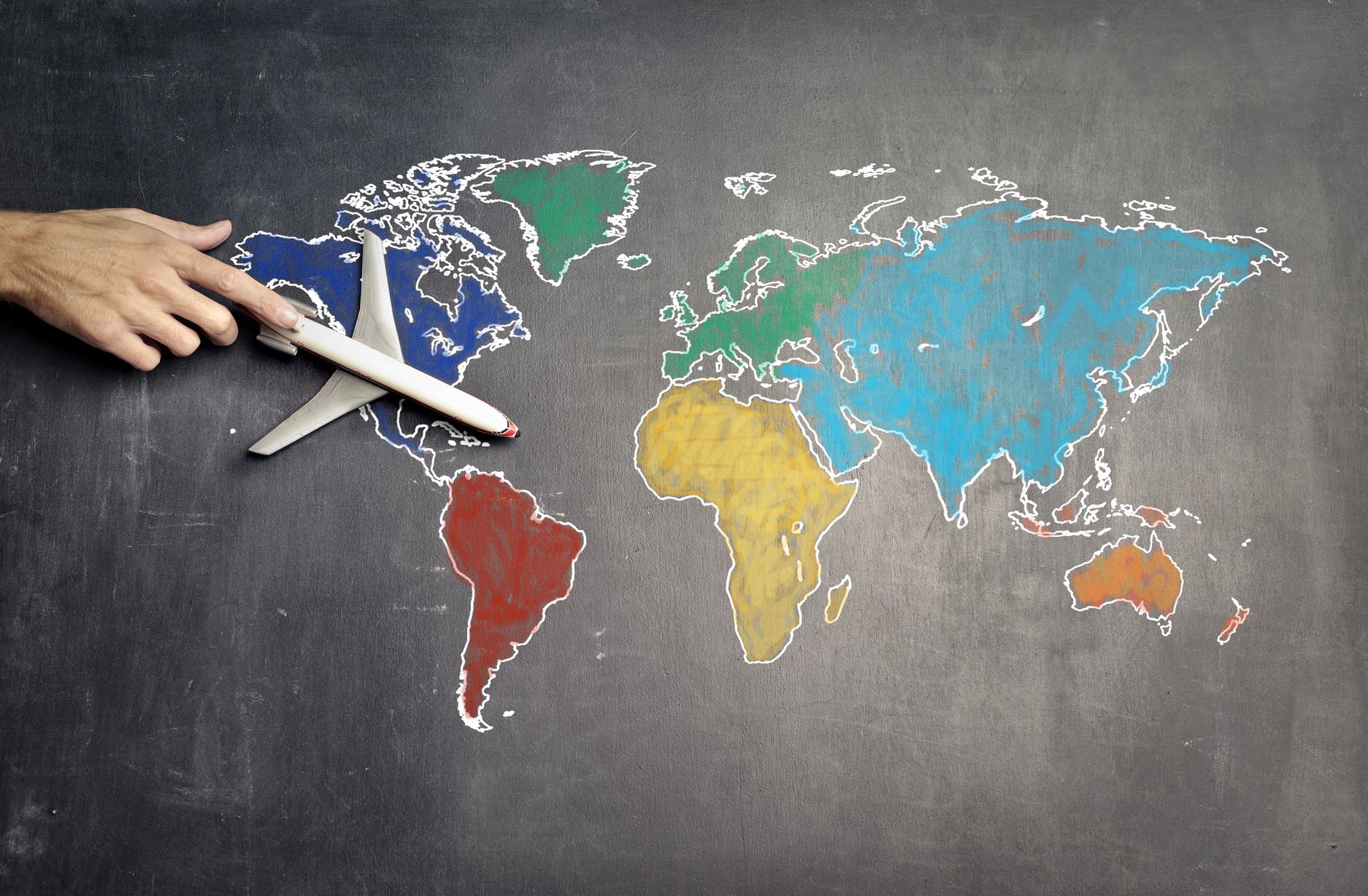
BLUF: Travels rewards are an effective way to greatly reduce the cost of traveling by minimizing or eliminating your airline and hotel costs. It lets you keep experiencing the world while not blowing your budget!
Who doesn’t love to travel? See different fascinating places, experience different cultures, visit different famous places and oh my, the food. The problem, is the cost of all that fun. Being that this is an FI focused blog, controlling expenses is important as that helps us reach our goal faster. I’m willing to spend the money on vacations, but I’m all for paying less for the same experiences. What’s not to like about that?
What are Travel Rewards?
Travel rewards, also referred to sometimes as either travel hacking or credit card hacking. The concept goes by a variety of different names but they generally mean the same thing. We’re trying to use credit cards to reduce or eliminate travel expenses. These usually revolves around the two largest expenses in a trip which are transportation (airline fares) and lodging (hotel costs).
How? You use normal life spending (groceries, gas, restaurants…etc) put on a rewards credit card to accumulate points. Those points can then be used to book airfare, hotels and rental cars outright or can be used to reduce the cost of them.
For example, say that a couple lived in Atlanta and wanted to take a trip to Hawaii. Atlanta is a hub for Delta so you look online. The cheapest option in late May would be $1,461.22 for two people. Most people would just chalk that up to the normal price of travel, pay and move in. Maybe they would charge it to a 2% cash back card and get $30 back for the purchase.

Wouldn’t it be nice if you didn’t have to pay for that airfare? On the Delta website you can very easily flip from paying in cash to miles. Picking the exact same flights I see that it costs 70,000 miles and $22.40 to book using miles. Okay, now to get 70,000 miles.
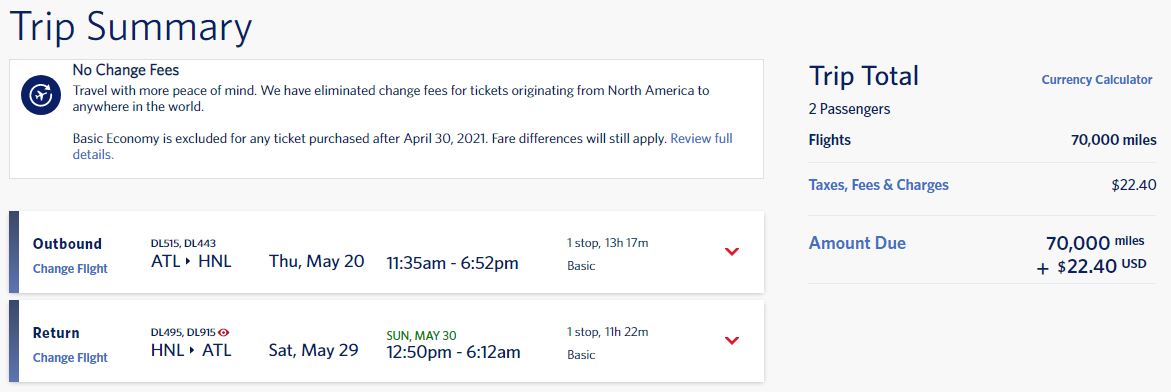
Right on Deltas website there’s a section for credit cards tied to SkyMiles which is Delta’s mileage program.
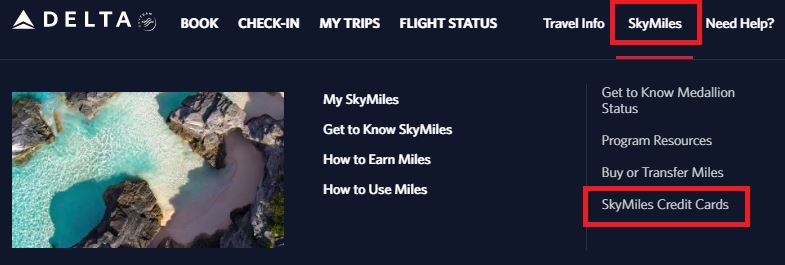
Boom! Right on the page there’s an American Express card that conveniently has a 70,000 mile bonus right now with no annual fee for the first year. The only stipulation is that you spend $2,000 in the first 3 months. Spending $670/mo should be problem for anyone with the life expenses that you can charge to a credit card.
Just like that we flew to Hawaii round trip spending $22.41 for two people instead of $1,461.
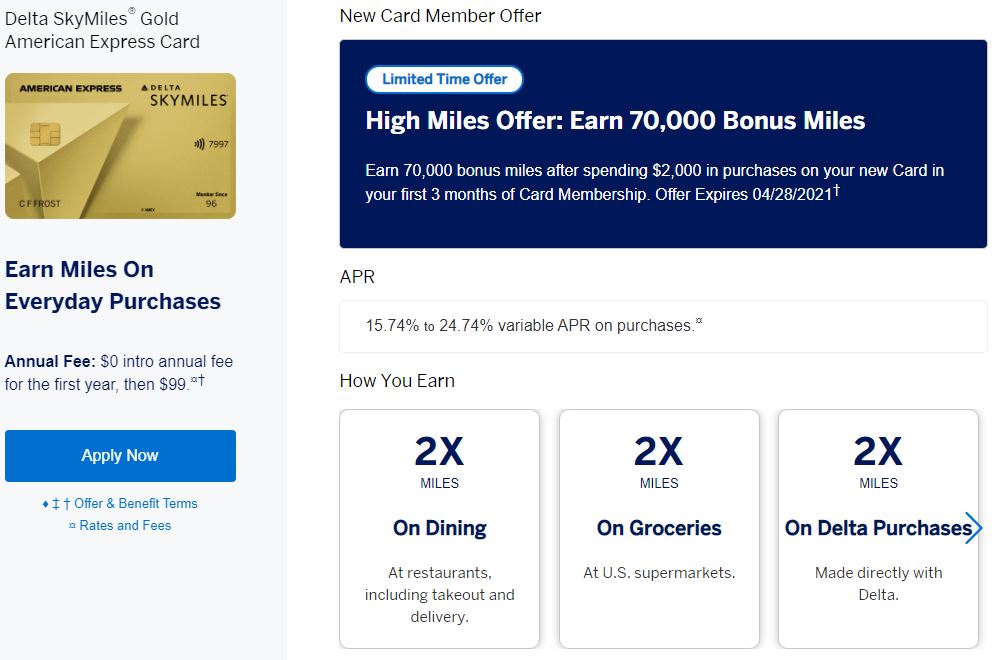
Types of Travel Rewards Programs
There are three main groups of travel rewards credit cards out there. Let’s dive into the details of each.
Flexible Points Programs
Flexible points programs give you rewards in points associated with their respective programs. Then, depending on the program you can either book travel directly with the company using their travel portal, transfer points to airline or hotel partners in their rewards point system or redeem the points for cash. The best deals are usually via points transfers but your mileage may vary (pun intended 😃).
One great thing about these programs is that the points usually don’t expire. As long as you maintain an account in good standing with them (at least one card) then they just sit there.
- Chase Ultimate Rewards (UR) Points – This is one of the most popular programs due to the high value of their points, large number of card options and large number of transfer partners. You can buy travel directly through their website, transfer points to travel partners in their rewards programs or take the points as cash.
- American Express Membership Rewards (MR) Points – Also very popular and some people prefer it over Chase. It has different transfer partners than Chase. You can buy travel directly through their website, transfer points to travel partners in their rewards programs or take the points as cash.
- Citibank ThankYou Points – A newer player to the flexible points programs game these aren’t as publicized but they work in a similar way. Just like Chase and American Express they let you book travel directly through a portal with them, transfer them to partners or redeem them for cash.
- Capital One “Miles” – Capital One calls its system miles but it’s really a flexible points system like the others. In general it’s the least valuable because it has the fewest transfer partners, which is where you get the most value from your miles. It does have one unique feature in that you can use your miles to wipe out any travel expense that you pay for in cash at $0.01 per mile. For example, you could use 50,000 “miles” to wipe out a $500 rental car charge on your Capital One card. This is one way to get reimbursed for other travel expenses that you otherwise might have trouble getting for free.
Note that while these programs are very flexible, they don’t transfer to ALL airlines and hotels out there. For example, Chase UR points don’t transfer directly to Delta at the time of writing this article (see image below). You can use the points to book Delta through their portal. American Express DOES transfer to Delta. It’s best to go into accumulating points in these programs with a next trip in mind so that your spending gets you points that you know you will use.
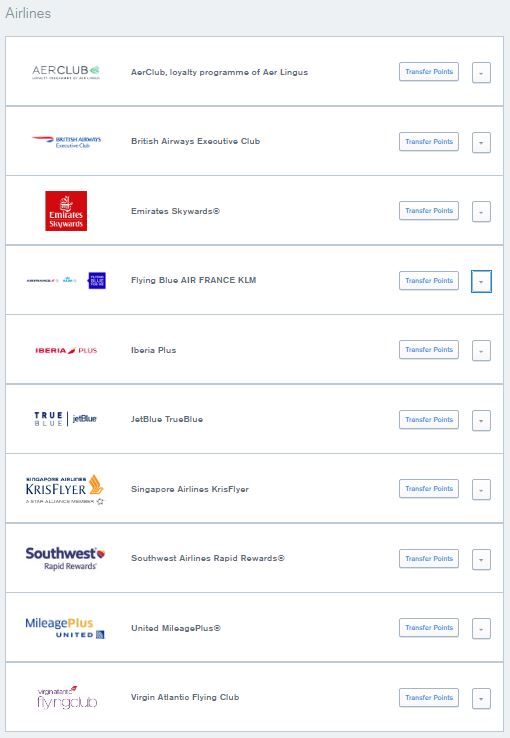
Airline Miles Programs
Each airline has their own mileage programs and they partner with different credit card companies to offer credit cards that accumulate miles in those awards programs. Spending money with those cards accumulates miles and the sign up bonus (SUB) is also paid out in those miles.
For example, here are a couple different Chase cards associated with different airlines. The United card would give you Explorer miles and the British Airways card would give you Avios points. When you open these cards they connect with an existing rewards account with the airline or open a new one if you didn’t already have one.
Your points are automatically transferred over to the airline account (often monthly) so your points are safe even if you cancel the credit card. Each airline has it’s own rules for points expiration though so be sure to look that up so your points don’t accidentally expire on you.
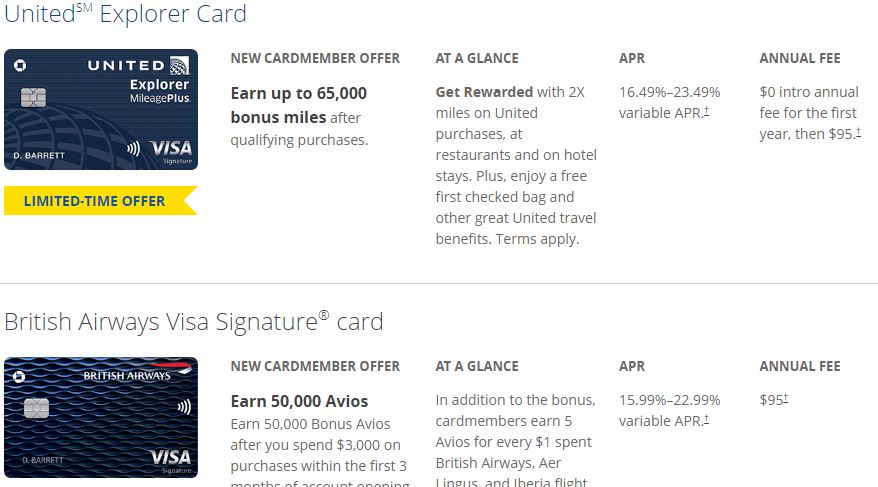
Hotel Points Programs
Hotel rewards cards work in the same way as airline cards. The biggest difference is that the value of each point can vary much more wildly between programs compared with the airlines.
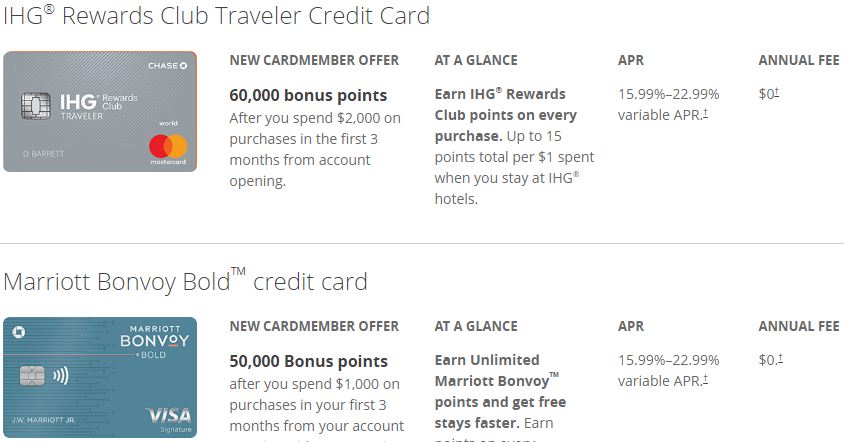
Sub-optimal way to accumulate travel rewards
If I were to describe the perfect customer in the eyes of a credit card
company it would probably go something like this. A customer is lured into signing up for a card with a substantial SUB, but doesn’t hit the minimum spend to get the bonus. They keep the card their whole life and carry an account balance the entire time.
I know my readers are smarter than that and would never do those things. However, many customers do get a SUB and then just keep a credit card forever. They enjoyed that bonus and built loyalty over the year they have it and often keep the card. That’s exactly what the credit card companies are hoping you do.
What’s the problem with that? It will take you forever to accumulate travel rewards after the SUB. In the previous Delta example we spent $2,000 in 3 months and flew to Hawaii for free. After that though, you accumulate 2x miles on dining and 2x miles on groceries. If I spend $800/month on groceries and $200/month on dining that’s $12,000 or 24,000 miles a year. It would take me 3 years to earn enough miles to go back to Hawaii! 3 months vs. 3 years. That’s the power of the SUB!
Supercharged travel rewards
What’s the optimal way to accumulate travel rewards then? Maximize the SUB of course. Open a credit card, spend enough to hit the SUB and then move on to another card. How effective is this? Very. In the last 18 months my Mrs. MFI and I have 308,000 UR points, 115,000 United miles and 61,000 American Airline miles. This is all using personal spending in a household of two people that spends less than $60k a year.
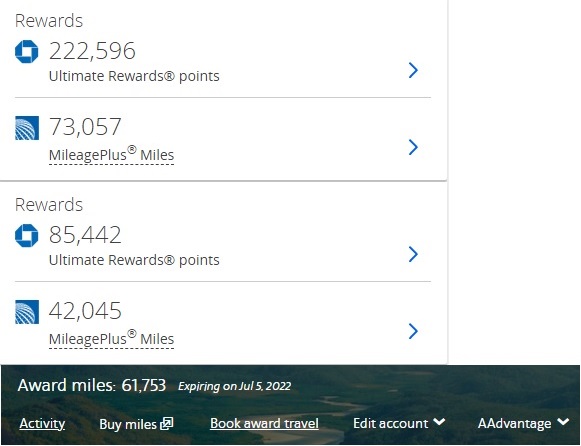
…But it will destroy my credit!
One of the most common misconceptions is that travel rewards (also sometimes card credit card churning) will destroy your credit score. Surely opening and closing that many accounts must hurt your score? Nope. This might be obvious to you if you read my article on how credit scores work and how to increase yours.
Yes, you take a small temporary hit when accounts are opened but the number of open accounts is a low contributor to your credit score. Payment history and credit utilization are high contributors to your credit score and both are improved with more cards open. Obviously this assumes on time payments and not carrying a balance. Opening 4 personal credit cards in the last 18 months still has my scores in the 800s.
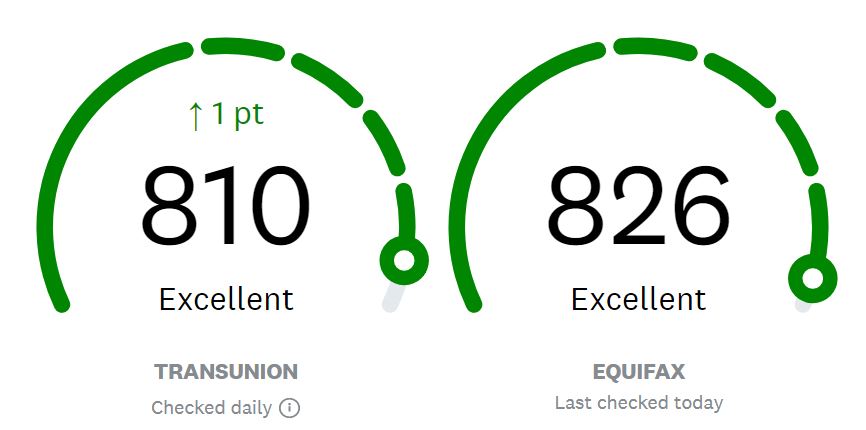
People that should and should NOT try travel rewards:
Just like casino’s being built on the money from the losing gamblers, credit card companies profit from the people that aren’t responsible with their credit. The people that use travel rewards successfully are losing credit card companies money but those people are the minority of credit users. If you are going to truly use travel rewards to save money then you MUST be a responsible credit card user.
People that should try travel rewards:
- Have good credit scores of at least 700. All the best rewards cards require excellent credit.
- Pay off their credit cards in full each month (they never pay interest charges).
- Know how to control their spending and can hit the minimum.
Travel Rewards Essential Tips:
- Plan our your trips far in advance. It takes time to open cards, hit the spend limits and get awarded mileage. Also, the best deals get booked up early so you can’t usually get good points deals last minute unless demand is low.
- Target cards and points to a trip, not just randomly based on the best SUB. It’s alluring to stockpile points but what good is that if you have trouble using them? Best to pick a trip then focus on how to get airfare and hotels on that trip for free.
- Never sign up for a card until you have a plan to hit the SUB spending requirement using your normal life expenses. If you’re spending money that you otherwise wouldn’t to hit a SUB, are you really saving money? This sometimes means opening cards around major purchases or expensive yearly costs like insurance premiums and taxes.
- Don’t sign up for a new card within a month of the last card. This can be a red flag and could get you denied.
- Play the game with two players. If you have a spouse, have both people sign up for cards. This allows you to do cool things like sign up for a card and then refer your partner getting you each a bonus.
- Keep all cards open for at least a year and never cancel right after hitting the SUB. This can trigger that you’re abusing the system and set off red flags. When you’ve had a card for a year the annual fee will hit again. At this point you can close the card and they will credit back the annual fee.
Action Steps:
- Figure out the next trip that you want to take that requires flying.
- See what it would cost you to take that trip paying for it with cash. Then see how many miles it would take you to book the same trip.
- Look at the airline credit cards available and see if there’s a card that can get you the points that you need. This might be only one card or could require two different cards. Besides airlines there are lots of sites like Nerdwallet and The Points Guy with up to date info on the cards with the best rewards.
- Sign up, hit the minimum spend, get the SUB and book those flights for free!
Like the content? Click here to subscribe to the e-mail list and have the articles delivered to your inbox.
